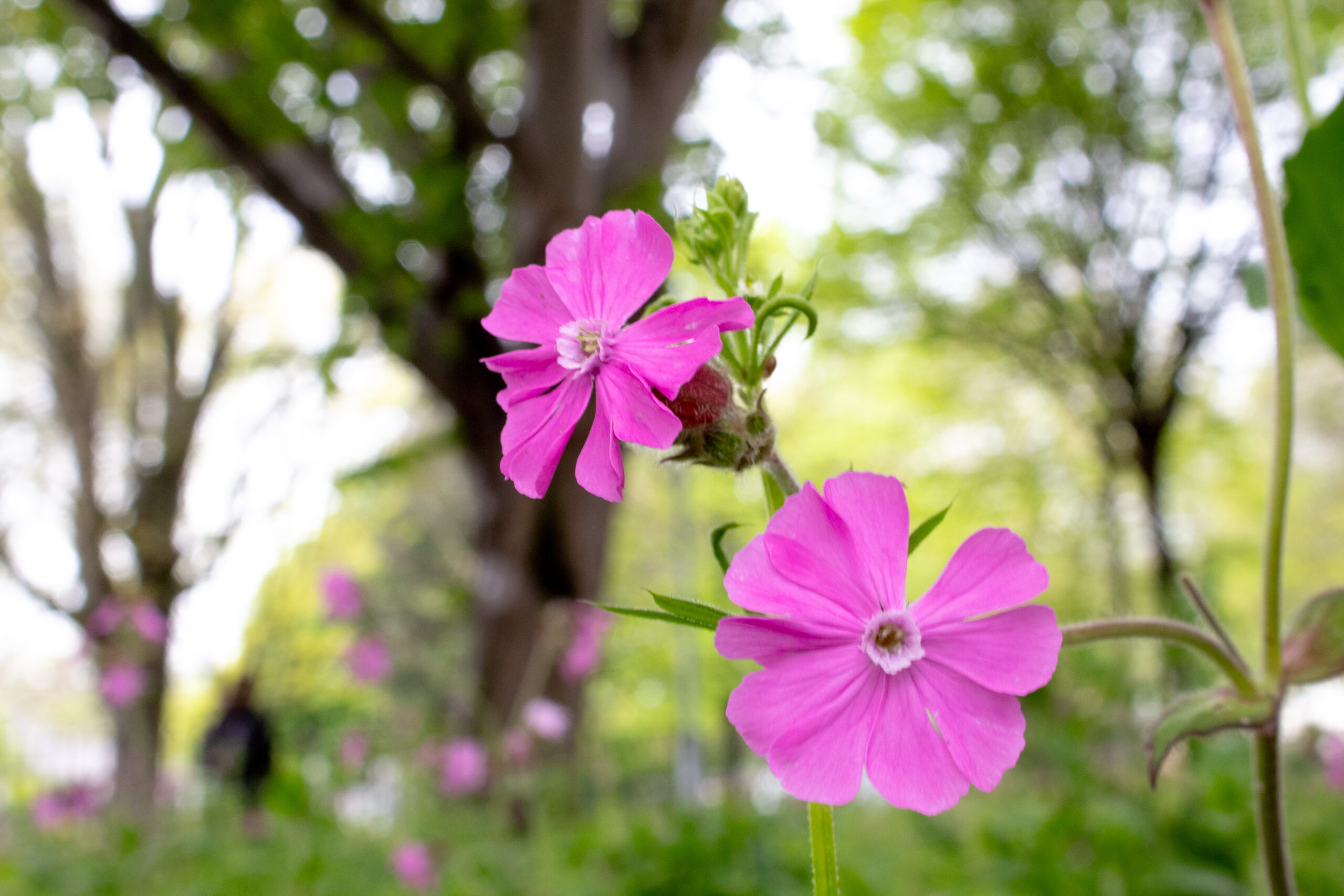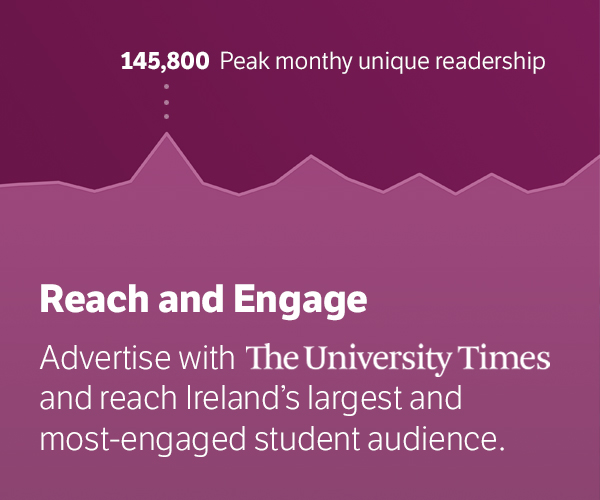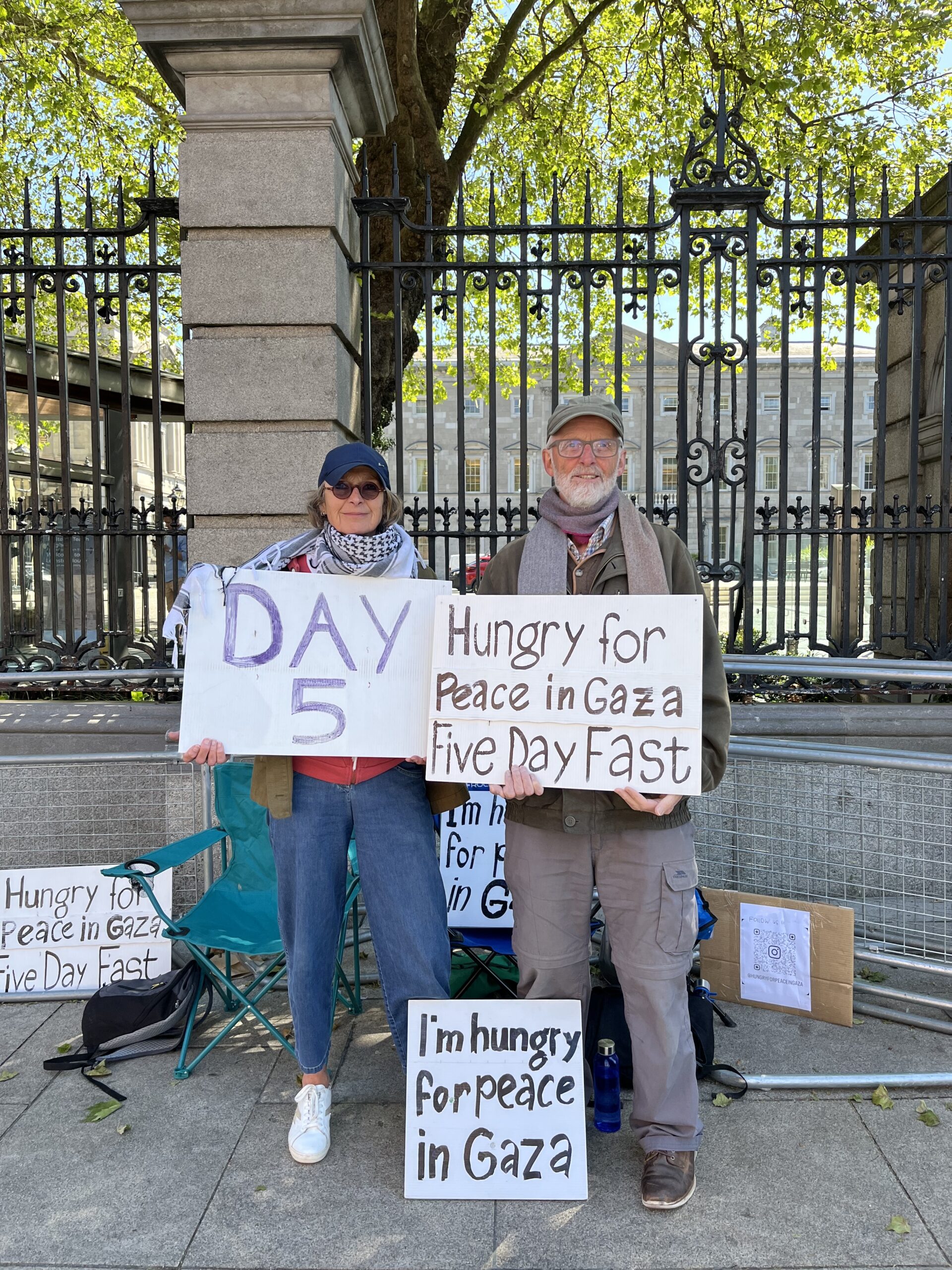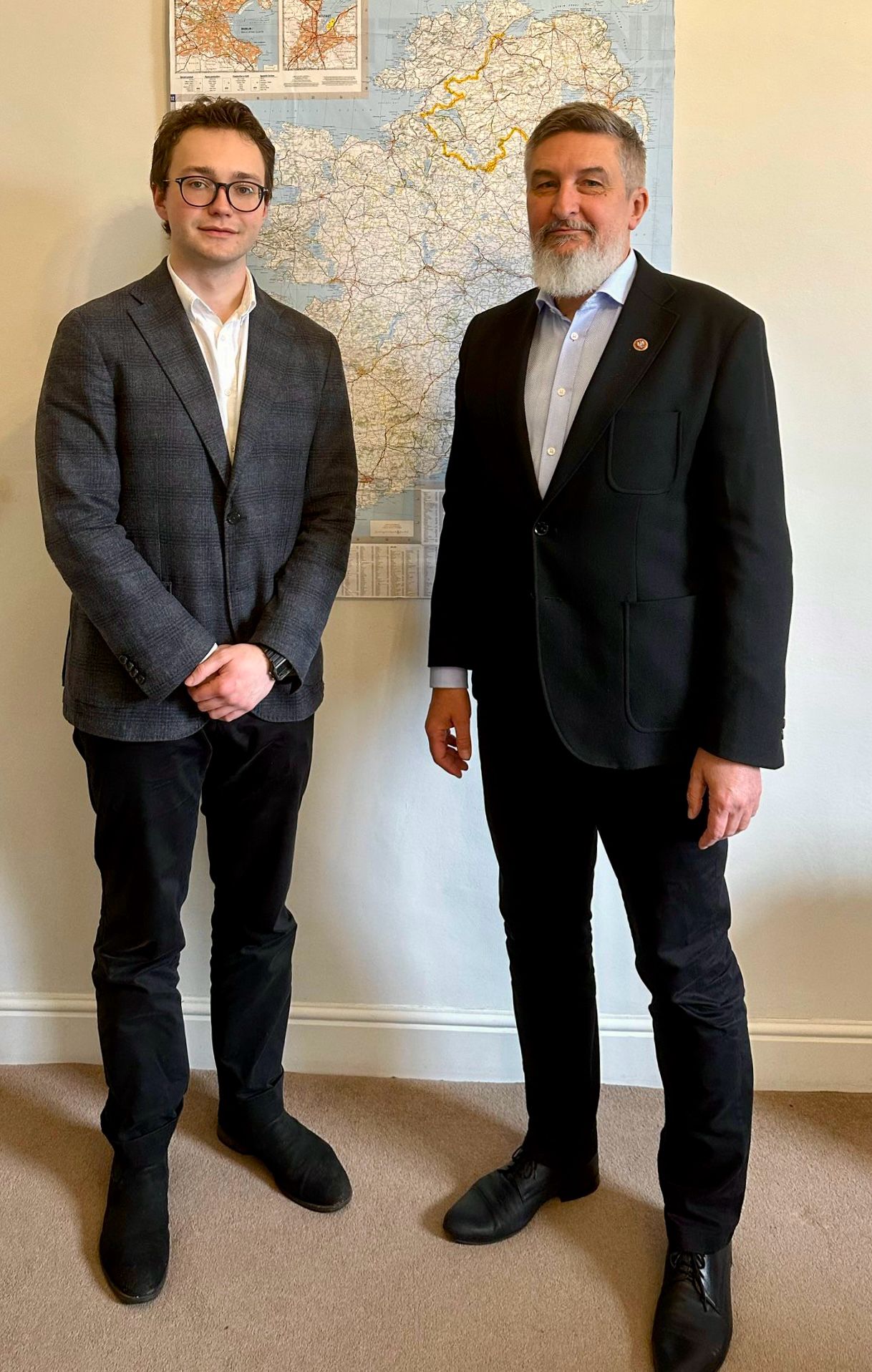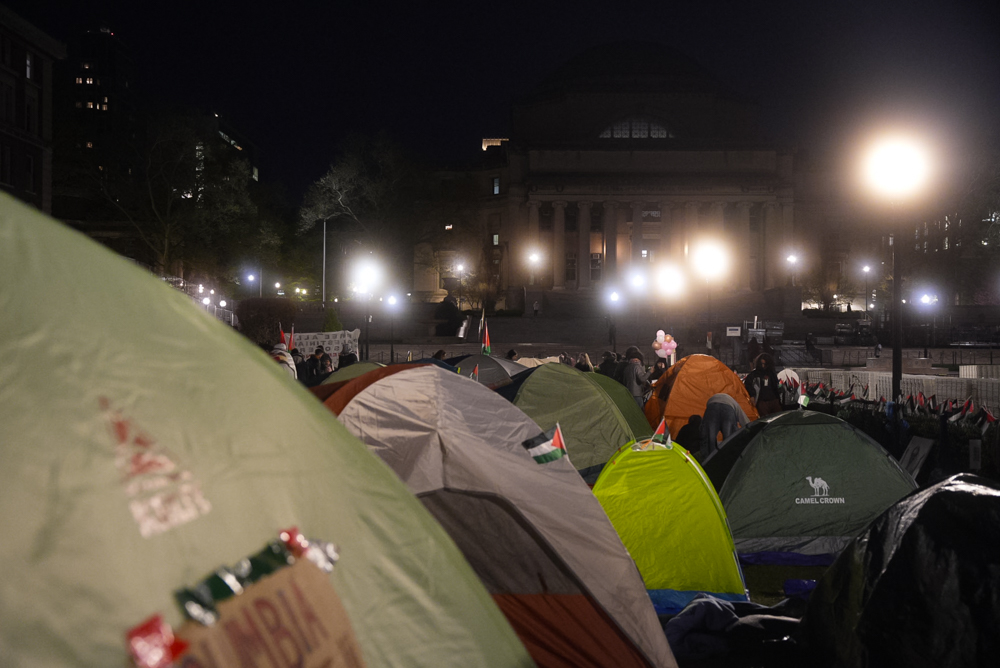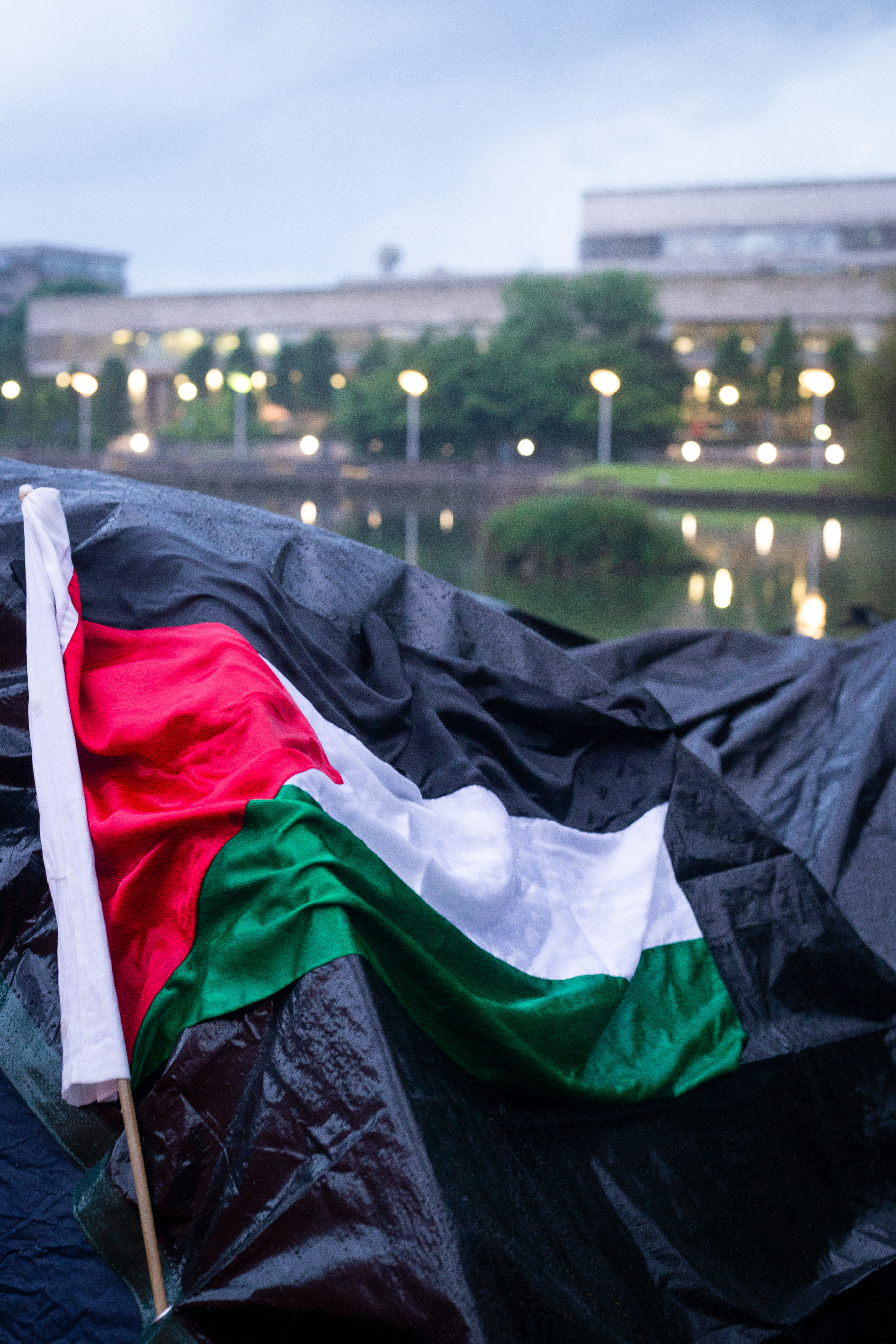On an intensely sunny Monday afternoon in April, I went for a forest stroll. But it was perhaps not quite what you’re picturing: the forest in question was the on-campus Trinity urban forest, a pocket forest planted just outside Parson’s Hall. Its footprint is just under 30 meters squared, and at five months old, the baby saplings reach only to my belly button. Yet despite its minute size, this student project is transforming a former scrubby grass patch into a highly efficient carbon sequestration project.
Before the forest, “this area was all just sort of weeds and grass”, explained Conor Davis, a recent graduate of the Postgraduate Certification in Climate Entrepreneurship. For 30 years, Davis was an engineering manager at Intel before having a change of heart, studying climate entrepreneurship, and beginning his own sustainable lab solutions company. Somewhere along the way, he found time to plan and execute the Trinity urban forest project, along with classmate André Baumann and the rest of their cohort. Trinity urban forest ‘was about getting people together,’ Davis explained. Certainly, the spirit of the project reflects this, based on multiple collaborations and now crowned with a plaque that designates it as the project of the 2024 class of Trinity Climate Entrepreneurs — a sort of class legacy.
Beginning in May 2024, it took seven months of coordination between Davis and Trinity offices to gain approval, establish a site, secure partial funding, and actually plant. “Lobbying to Trinity … that was quite a challenge”, said Davis, but eventually he successfully secured 500 euros from Trinity Sustainability and raised 650 euros in a GoFundMe– most of which was donated by the Climate Entrepreneur class. On December 13th, the group of eleven classmates planted the forest. Since then, with some care, time, and sun, it has thrived. It expands on the footprint of a small 2022 pocket forest project planted just outside Parson’s Hall.
Walking through the patch, you’ll find neatly tagged native Irish shrubs and trees, densely planted. There are a variety: hawthorn, blackthorn, dog rose, and spindle shrubs, as well as alder, hazel, silver birch, and rowan tree saplings. The plants were sourced from Sonairte, an ecocentre in county Meath, and were bought as saplings rather than seeds in the interest of time.
Pocket forests are an invention of Akira Miyawaki, a Japanese botanist and plant ecologist, who began planting mini woodlands in the 1970s. He pioneered a method of dense tree-planting to provide speedy forest cover to degraded land, dubbing them “native forests by native trees”. In a Miyawaki forest, native trees, shrubs, and ground-cover plants are planted at 20 times the normal density of a forest plantation, which conventionally are well-spaced monocultures, or singular tree species. Extensive research has found that Miyawaki’s multi-layered dense planting technique spurs growth through competition for sunlight and other resources. The density also means that plants connect to a rich root network faster, exchanging nutrients and increasing soil health.
Experts have found that Miyawaki forests grow up to ten times faster and are 100 times more biodiverse than traditionally forest plantations. In just five to ten years, a Miyawaki forest establishes the equivalent of a 30-year-old natural woodland, and in fifteen to 30 years, a 100-year-old natural woodland. In our age of frantic ecological restoration and rewilding, the Miyawaki model is useful for its speed and minute footprint.
The Miyawaki model has spread across the world, spurred on by a popular 2014 TED Talk by Shubhendu Sharma. Ireland is no exception to this influence. As of the end of 2024, Pocket Forests, an Irish organisation started by journalist Catherine Cleary in 2020, has created 105 pocket forests across Ireland with a total of 4883 trees planted. Trinity urban forest itself was inspired by Cleary’s work: through both her non-profit work and as a prominent journalist for the Irish Times, she is a primary driver for the spread of pocket forests across the country.
Part of the appeal of the Miyawaki method is its highly efficient carbon sequestering. Due to the wide variety and density of shrubs and trees, a pocket forest can sequester up to 30 times more carbon than a monoculture tree plantation. According to the Trinity urban forest project report’s carbon sequestration model, it is projected to remove 4,910 kilograms of carbon from the atmosphere by the five-year mark. That is about one household’s annual carbon emissions, or only about 0.5% of Trinity’s 51% by 2030 goal. But, the sequestration will exponentially increase: by 2035, the forest will have sequestered 24,050 kilograms of carbon, and by 2045, 73,550 kilograms. Though the project is small and makes only a small contribution to Trinity’s goal of reducing carbon emissions 51% by 2030, it is yet another example of a collaborative student-led initiative that cleverly sneaks another sustainable space onto Trinity’s concrete-heavy campus.
Trinity urban forest will also increase Trinity’s biodiversity by creating rich soil and providing shelter and food for birds and mammals. Soil health is an underrated and crucial marker of biodiversity: soil hosts 25% of all living organisms. Davis knows this and planned accordingly. Approximately a month before planting, Davis, Baumann and John Parnell from Trinity’s Estates and Facilities Team spread some 90 kilograms of coffee grounds on the site. The grounds themselves were the result of another collaboration, donated by fellow Climate Entrepreneur Peter Norton from his sustainable cafe, Poppies Cafe, in Enniskerry. The coffee grounds are a potent fertiliser with lots of nitrogen. The team followed that with a layer of cardboard – to trap in soil moisture – and mulch.
This soil preparation has a second function – the cardboard prevents most weed growth, which means there is little necessary maintenance. If it does require weeding, watering, or care, the Estates and Facilities team looks after the site, though Davis and his cohort meet at the site bimonthly or so in order to keep an eye on it. It’s an ongoing collaborative effort.
Davis informed me that research indicates approximately 10-20% of the planted trees in a Miyawaki-style pocket forest will die, but so far, that doesn’t seem to be the case. The forest is flourishing. With all the glorious sun Dublin has received in the last few weeks, the saplings and shrubs have pushed out leaves and are beginning to fill in the space. Already, Davis says they have grown some two or three feet since December.
Pocket forests are powerful because they transform small barren patches into carbon-efficient forests rapidly. They require only a small team to do so and virtually no ongoing maintenance, while providing both ecological benefits– other cited benefits of the Miyawaki model include better air quality and, as with all green spaces, improving people’s wellbeing. But Trinity urban forest’s real impact is that it will hopefully inspire other pocket forests. “If you can multiply [urban forests] around the country”, Davis explained, “that would be really brilliant!”
At the end of the day, the urban forest will not deliver Trinity from climate doom. But it is a community-driven, sustainable solution that delivers biodiversity and green space to Trinity’s urban campus. It also doesn’t hurt that “it was good fun, and we got a lot out of it”, says Davis. He still meets with his cohort at the urban forest site every so often to keep an eye on it and catch up. Their mark has been made: in five, ten, fifty years, a minute Irish woodland will shade the outside of Parson’s Hall. At its core, Trinity urban forest reminds one of the cheesy, yet accurate proverb: the best time to plant a tree is twenty years ago. The second-best time is today.
